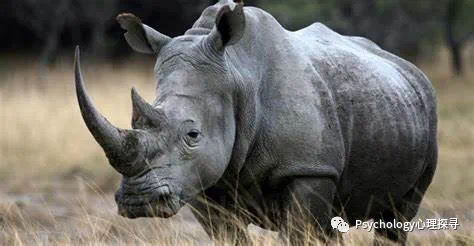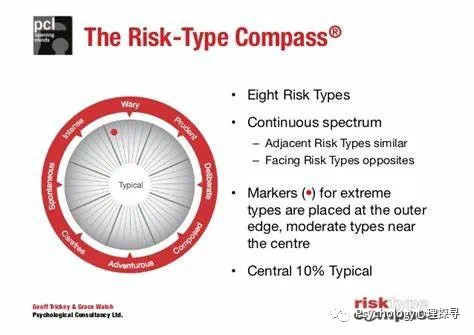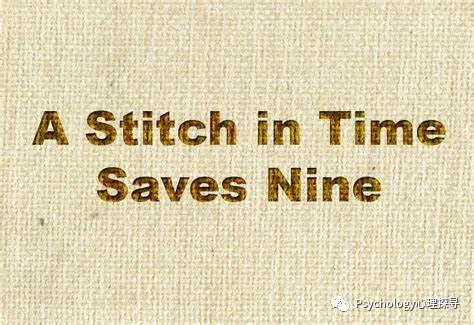灰犀牛事件(Gray Rhino)
Gray Rhino & Company Founder and CEO Michele Wucker coined the term “gray rhino” to draw attention to the obvious risks that are neglected despite – and often because of – their size and likelihood. The timely metaphor has moved markets, shaped financial policies, and made headlines around the world, especially as a metaphor for the ignored warnings that led to the COVID-19 pandemic.
Gray Rhino & Company 创始人与 CEO Michele Wucker 首次提出了灰犀牛一词,用来描述那些十分明显但却被忽视的风险,尽管(通常恰恰正是因为)这些风险颇具规模和可能性。这一概念影响了市场和金融政策,并在全球被头版报道,尤其常被用来比喻导致新冠疫情的那些早期警示事件。
Michele’s 2019 TED Talk has attracted well over two million views. She is the author of four books including the global bestseller THE GRAY RHINO: How to Recognize and Act on the Obvious Dangers We Ignore; and the forthcoming YOU ARE WHAT YOU RISK: The New Art and Science of Navigating an Uncertain World (April 2021).
Michele 2019 年的Ted 演讲观看量已经超过200万次。她著作了四本书籍,其中一本就包括全球畅销书《灰犀牛:如何应对大概率危机》,以及即将出版的《YOU ARE WHAT YOU RISK: The New Art and Science of Navigating an Uncertain World》。

01
What is a Gray Rhino?
何为灰犀牛?
The Gray Rhino is a metaphor for the threats that we can see and acknowledge yet do nothing about: the two ton thing that should be hard to ignore, but from which we look away even though it’s in our interest to get away before it charges. It may be pawing the ground, snorting, and getting ready to charge at you; or it may still be a ways up the road when you still have time to manage things before they become urgent.
灰犀牛是用来比喻我们看到、并承认存在,却对其不采取任何行动的那些威胁:就像是本应该很难被忽视的两吨多重的庞然大物,但我们却视若无睹,即使我们知道在它冲向我们之前我们本该快速逃离。这只灰犀牛可能已经在急不可耐、蓄势待发,即将向你冲来,也可能离你尚远,你还依旧有时间在危险来临前采取应对措施。
I created it for talking about big policy issues, like debt crisis and financial fragilities, climate change, and inequality. Along that vein, it’s struck a chord during the Covid-19 pandemic as so many of us ask why so many warnings went ignored. But it’s also useful for business issues, whether outdated business processes and systemic decision-making failures, industry trends, or product safety issues.
我最早创造这个词,是为了谈论一些重要政策问题,比如债务危机、金融脆弱性、气候变化和不平等现象等。当新冠疫情发生后,很多人都在问为什么那么多明显的警告都被无视了,这一概念引发共鸣。但这一概念对商业问题也很有用,无论是过时的商业流程,或是决策体系缺陷,行业趋势,还是产品安全问题等。
I’ve been surprised at how many people apply the concept to personal issues as well: the suspicious mole on your back that you keep meaning to get checked out, the long-overdue tax returns, the stitch-in-time maintenance issues with your home or car.
我也很惊讶看到有那么多的人也将这一概念应用到了它们的个人问题中:比如你一直想要去检查的背上的一个可疑的痣,迟迟未交的报税单,房子或车子的一些因为没有及时维修而导致的大问题等等。
The gray rhino counters two familiar metaphors. The elephant in the room normalizes saying and doing nothing. That’s not okay. The black swan gives people a “nobody could have seen it coming” cop-out excuse for ignoring gray rhino problems that many people did see coming and warned about.
灰犀牛,与另外两个广为人知的概念相对。“房间里的大象”,是指问题明显在那里,但大家却都心照不宣假装视而不见,毫不作为,将此视为正常。这并非正常。另外一个是“黑天鹅”。当一些人无视很多人都预料到、都警示过的“灰犀牛”问题,发生危险后,他们可能就会以“这是黑天鹅事件,没有人会预料到这个会发生”为借口来给自己开脱。
02
The Gray Rhino Framework
灰犀牛框架
The Gray Rhino metaphor and framework is a way to get people to acknowledge and counteract our vulnerability to obvious, dynamic risks not just despite but because they are so obvious. There are five stages, each of which has different obstacles and strategic imperatives that shape your response:
有一些很明显的、不断在发展变化的风险,尽管很明显,但也恰恰正是因为其太过明显,所以我们会对其忽视,从而更容易受到其影响。这一灰犀牛概念以及框架可以让我们意识到我们这种倾向,并做出应对措施。
1.Denial. Insistence that there is no threat.
否认:坚称无威胁;
2.Muddling. Acknowledgement of the risk but come up with a litany of reasons not to do anything about it.
合理化自身的不作为:承认风险存在,但会想出一系列原因来说服自己不需采取任何行动;
3.Diagnosis. A switch to the active planning stage, analyzing what it takes to solve the problem and getting our ducks in a row.
诊断:切换至主动规划阶段,分析需要怎样才能解决问题,让一切处于掌控之中;
4.Panic. Frenzied anxiety in face of an imminent crisis; the time when we’re most likely to act but also most likely to make the wrong decision absent a strong action plan.
慌乱:面对即将到来的危机感到慌乱焦虑,这一时刻是最可能采取行动的时刻,但也最可能会在缺乏有力行动计划的前提下制定出错误决策;
5.Action. Taking steps - often led by positive mavericks - to avert the problem, inspiring others to join in the action, tracking the results, and adjusting as needed.
行动:采取行动——通常由一些正面的不墨守陈规者引领——避免问题,激励其他人加入行动,追踪结果,按需调整。
03
How does The Gray Rhino apply to business?
灰犀牛现象如何适用于商业?
Businesses can apply the Gray Rhino to risks, problems, and situations of all types and sizes. The metaphor and framework can help both leaders and their teams take a fresh, strategic threat at the kinds of highly probable threats that they are more likely to be ignoring than they think. That might be digital disruption, cyber-security, succession planning, turnover, over-expansion, or falling revenues.
企业可以将这一概念应用于各种类型和规模的风险、问题和情形。这一概念和框架能够帮助领导者和团队对各种更可能被忽视的高概率威胁采取一种新颖的、战略性的应对措施。这些威胁可能是数字化颠覆、网络安全、继任方案、员工流失率,过度扩张或营收下降等。
其中最大的一种威胁,是我称为“元灰犀牛”的那种,即,一个会阻碍解决问题,甚至阻碍识别问题的体制缺陷。在商界,充斥着很多因忽视灰犀牛事件而付出惨痛代价的例子:大众的排放丑闻、通用汽车与故障点火开关;黑莓、Blockbuster Video和柯达未能及时拥抱新科技等,不胜枚举。
尽管这些过去的案例可以诠释这一概念,但灰犀牛理论最有用之处在于当企业用这一概念展望未来挑战时,而非像是黑天鹅事件一样被用于回顾过往。成功应对灰犀牛事件,取决于领导力、风险管理能力、成本-效益分析和决策制定能力。
04
What is the psychology behind the gray rhino?
灰犀牛现象的心理学剖析
为什么一个人看到灰犀牛向自己冲来时会更倾向于选择忽视它呢?
人类受到很多认知偏见的掣肘。我们更倾向于否认,因为当面对令人难以招架之信息时,我们的大脑会试图将其阻挡在外,以保护我们,给我们充分时间去慢慢吸收。我们同时会使用“思维捷径”,这些思维捷径本来是为了让我们更快更轻松制定决策,但却也常常引导我们走向错误方向。
Some of the key biases are:
一些主要偏见如下:
• Optimism Bias. The tendency to embrace information that we want to hear, while ignore bad news.
• Confirmation Bias. The failure to take seriously information that does not confirm our existing views.
• Group think. The habit of agreeing with other group members, especially those with similar views and backgrounds.
• Solution Aversion. Resistance to acknowledging a problem because we don’t like the steps needed to fix it.
乐观偏见:倾向于接纳我们想要听到的信息,忽略坏消息;
确认偏见:如信息与自身观点不符,则不以为意;
集体思维:习惯认同集体成员的观点和想法,尤其是那些与自己观点和背景相同的成员。
厌恶解决方案:不愿意承认问题存在,因为我们不喜欢解决该问题所需采取的行动。
05
How do these biases manifest in different individuals?
这些偏见在不同人身上都有何表现?
首先,了解到这些偏见的存在,有助于我们消除这些偏见对我们的影响,尽管很难完全避免理智与情感之间的抗衡。同时,在有多大概率会去识别和应对灰犀牛威胁方面,也需要了解每个人的性格特征对此所产生的影响。
总部位于英国的 Psychological Consultancy 团队开发了一个名为“风险类型指南针”的工具,该工具围绕两条轴展开:焦虑VS 冷静;条理性VS 冲动,它能够测量你与每一极点的相符程度。通过这一工具,能够很好地了解对于灰犀牛事件,你和你的团队成员究竟因何做出不同反应,这样就能够集思广益,取长补短。

(The Risk Type Compass is an assessment that explores an individual’s predisposition to risk and their capacity to manage it. Based primarily on personality research, the Risk Type Compass uses aspects of an individual’s temperament to place them into one of eight risk propensity categories known as Risk Types. An individual’s Risk Type will give an indication of how an individual perceives risk, how much uncertainty they are able to bear, and how they will react when unexpected events or outcomes occur.
该工具用于评估一个人对风险的倾向以及应对能力。该工具主要基于性格特征研究结果,根据个体性格,将不同个体划分至八种风险倾向类别,即,风险类型。一个人的风险类型可以透露出一个人对风险的认知、对不确定性的承受能力、当意外事件或结果发生时他们会作何反应。)
06
**How does the Gray Rhino impact group decisions,
where consensus building is often necessary?**
**灰犀牛现象如何影响
往往需要达成全体一致意见的集体决策过程?**
与集体成员个人本可能制定的决策相比,集体最终达成的决策的风险性往往要远远更高或远远更低。这一现象被称为“风险转移”。由相同背景和特征人群沟通的集体更可能受到这一现象的影响。团队成员之间越相似,他们就越不可能去考虑其他可能场景,越可能忽视警示信号。
同质化(非多元化)的团队对企业组织而言会十分危险,就像是如果一个房间里都是锤子,那么它们会将每个问题都视为钉子。同质化的团队成员极有可能会从同一视角去看待问题,从而可能遗漏重要信息。与上面满屋子锤子相比,如果是一个工具箱,那么它就会对一个问题给出多种解决方案,这就是为什么拥有一个由不同人群和背景组成的团队对明智决策制定至关重要。
07
**How should organizations think
about risk as a diversity metric?**
企业应如何将风险视为一种多元化程度衡量参数?
首先,需要去思考高管人员和董事会成员各自的风险态度,以及整个企业的整体风险文化。如果一个房间里都是律师,他们可能就会集体致力于将风险降低为零,那么可能就会在无意中创造其他风险。
最理想情形是不同背景,不同个人经历,不同职业——以及不同风险态度的人集合在一起。这种组合会让这一团体难以达成全体一致意见,但却能够提升决策质量。
08
**There is always a myriad of decisions to be made.
How do you triage?**
总有很多决策需要制定,如何区分轻重缓急呢?
当《灰犀牛》首次出版时,人们通常会询问小行星重大撞击的概率。这种灾难的发生几率时很小的,尽管并非为零,但开发一种“小行星击毁射线”的成本却是很高的,尤其是与那些我们能够用同样的钱去控制的灰犀牛事件相比时。
在灰犀牛框架的“合理化不作为”阶段,人们会犹豫,并想出各种各样的理由去合理化自己的不作为。这样,由于每个人都惧于行动,因此他们会瞻前顾后,将各种有关无关的问题都考虑进来。但你需要做的是切换至“诊断”阶段,询问自己两个关键问题,从而让你能够制定更好轻重缓急判断策略:
问题1:这一问题与其他问题的相关程度有多么紧密?
问题2:需要做什么才能解决这一问题?
一些企业在考虑风险时只考虑其可能性和潜在影响,但同时还应考虑其远近程度,发展速度,问题解决成本,当前拥有的问题解决资源,是否能够获得解决该问题所需的资源等。同时还应考虑这一特定问题与其他问题的关联性,无论是上游问题,下游问题或是横向问题等。是否在解决这一问题的同时还能够解决一个相关的问题?如果解决了这一问题,是否还可以解决另一个问题?如果利用现有资源去解决这一问题,会产生怎样的机会成本?这些问题有助于让你找出其他的利益相关者和同盟。
